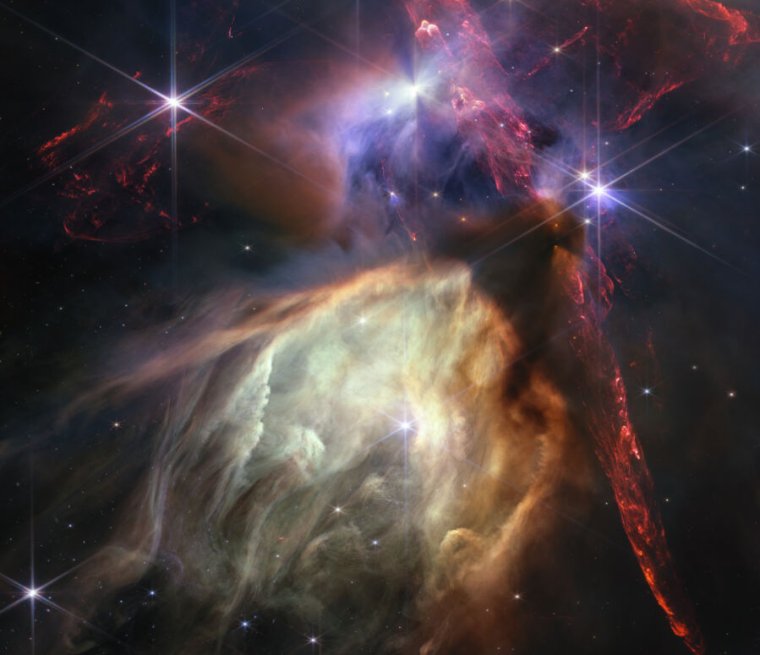
In a feat of galactic archeology, astronomers are using ever more detailed information to trace the origin of our galaxy—and to learn about how other galaxies formed in the early stages of the Universe. Using powerful space telescopes like Gaia and James Webb, astronomers are able to peer back in time and look at some of the oldest stars and galaxies. Between Gaia’s data on the position and movements of stars within our Milky Way and Webb’s observations of early galaxies that formed when the Universe was still young, astronomers are learning how galaxies come together and have made surprising discoveries that suggest the early Universe was busier and brighter than anyone previously imagined.
The Milky Way’s earliest pieces
In a recent paper, researchers using the Gaia space telescope identified two streams of stars, named Shakti and Shiva, each of which contains a total mass of around 10 million Suns and which are thought to have merged into the Milky Way around 12 billion years ago.
These streams were present even before the Milky Way had features like a disk or its spiral arms, and researchers think they could be some of the earliest building blocks of the galaxy as it developed.
“What’s very interesting is that we are able to detect these structures at all from such ancient times,” said lead researcher Khyati Malhan of the Max Planck Institute for Astronomy (MPIA). “These very massive fragments came in and they collapsed under their own gravitational force, and they basically formed the proto Milky Way galaxy.”
This happened when the Universe was still young, with the earliest galaxies forming only around 13 billion years ago. When these groups of stars were coming together to form what would be the Milky Way, it’s debatable whether the group they joined could even have been called a galaxy. While there are broad gravitational requirements for a certain mass of stars to hold itself together, there’s no precise definition of when a group of stars can truly be called the start of a galaxy.
“When is a city a city?” said coauthor Hans-Walter Rix, also of MPIA. “This is why there isn’t an epoch when the galaxy formed. It’s been a continuous process.”
The Milky Way as a test case
With so much still to learn about the formation of galaxies, it makes sense to start with our own Milky Way galaxy as a test case. The Milky Way is “a tremendously average galaxy,” Rix said. When compared to the rest of the Universe, “Half the stars live in bigger galaxies, half the stars live in smaller galaxies.”
What makes the Milky Way useful is that we have unique access to it, providing the ability to see individual stars within it. That means researchers can identify large groups of stars that seem to have originated together with similar ages and levels of heavier elements. Looking at each of these groups lets them track how the galaxy was pieced together.
There are two main ways that stars enter galaxies. In the first, large clouds of diffuse gas are present within an existing galaxy, and this gas condenses so that stars form within it. Alternately, stars that form in a satellite galaxy can be dragged into the main galaxy.
Today, we most often see the formation of stars within gas clouds, with around 90 percent of the stars we see today formed in this way. But at earlier stages of the Universe, the satellite accretion option was much more important, as most stars from this period are thought to have formed in clumps that were then dragged into the young Milky Way.
To understand the Milky Way’s history, astronomers need to trace the origin of these groups of stars and figure out what drew them into the galaxy we know today. “One of the big goals is ‘can we reconstruct the early accretion events of these pieces coming together?’” said Rix.
Using Gaia data, the researchers were able to pick out groups of stars with similar orbits that were located toward the center of the galaxy. They are located about halfway between Earth and the galactic center and are found in a thick-wall torus shape revolving around the galaxy’s center.
The researchers suspect that the two streams of stars they discovered were some of the final pieces of the Milky Way that were absorbed during the satellite accretion stage, after which star formation within the galaxy took over as the primary driver of stars joining the galaxy. “It looks like Shakti and Shiva are perhaps the last hurrah of that early phase, when it was mostly bits and pieces coming together,” Rix said.






















+ There are no comments
Add yours